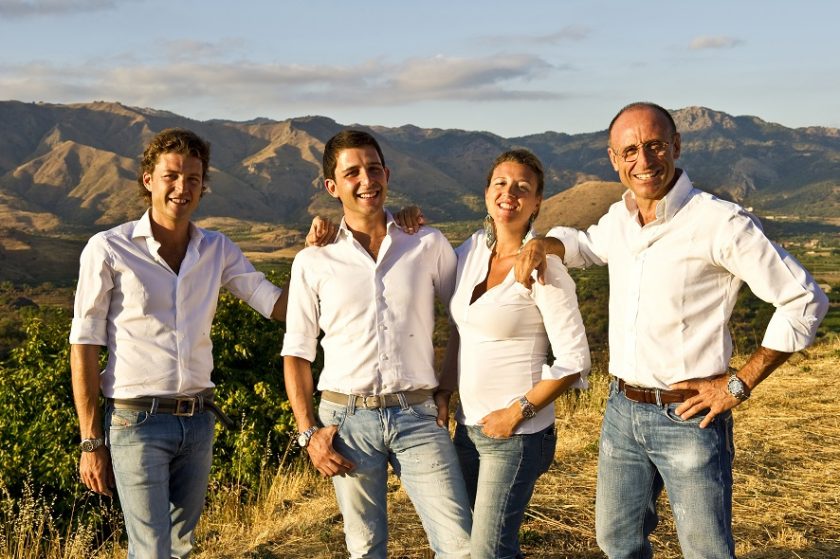Cottanera
“The Cambria family has embarked on an ambitious renewal project… International varieties (like Merlot) have been replaced with indigenous grapes. Today, 42 of Cottanera’s 60 hectares of vines are planted exclusively to native Etna grapes. This important estate now farms five distinct contrade including Contrada Cottanera, Zottorinoto, Feudo di Mezzo, Calderara and Diciassettesalme… Keep your eyes on Cottanera because this is indeed an exciting winery to watch.” —Monica Larner, Wine Advocate August 2017
In its essence, the story of the Cottanera winery is about a return to one’s roots. The story begins with Francesco Cambria, who, in 1962, seeking a retreat from his career in Messina, bought 100 hectares of vines and hazelnut groves near his birthplace in Randazzo. Francesco cultivated hazelnuts and also initially sold grapes to the local cooperative, but with the arrival of DOC status for Etna in 1968 and hazelnuts losing market share, he soon decided to focus on grape growing for bulk wine production, replanting the hazelnut groves to vines. In the late 1980s, Francesco’s son Guglielmo decided to build a winery to make his own wine, rather than selling the grapes, and he was quite successful selling it “sfuso” in demijohns to local consumers and restaurants. The initial success of these wines pushed Guglielmo to point on quality wine production, so in the mid-1990s, he renovated his father’s vineyards to increase density and lower yields, and the first wines labeled as Cottanera were born.
In 1995, it’s important to remember that the fame of Etna had not yet reached our shores. A few estates were present in our market, but it’s not like it is today, with Etna fully recognized as one of Italy’s most exciting regions. Of course it’s true that insiders knew Etna’s potential: from the 1850s to the 1960s, Nerello-based wines left from Etna to be blended into more famous appellations, including into Piedmont’s reds as well as their neighbors in France! But even Marco de Grazia didn’t start dabbling in wine production there until about 2000, and 2002 was his first commercial release. The Cambria family tried everything to bring fame to their volcanic terroir, including planting Cabernet, Merlot and Syrah in an attempt to reach a more international audience for Etna. That experiment, however, only lasted from 1995 to 2002, when, once again, the Cambrias were able to return to their roots. Enologist Lorenzo Landi joined the Cottanera team, and the true potential of Nerello-based wines at Cottanera became evident. In 2005 they released their first Etna Rosso DOC, and in 2009 their first Etna Bianco DOC. Meanwhile, they had been grafting over their vines to Nerello and Carricante, as well as purchasing some cru vineyards in Zottorinotto, Feudo di Mezzo and Diciasettesalme. In 2008, tragically Guglielmo passed away, but his children Francesco, Mariangela and Emanuele along with their uncle Enzo now are at the helm of this dynamic and exciting rising star of Sicily!




